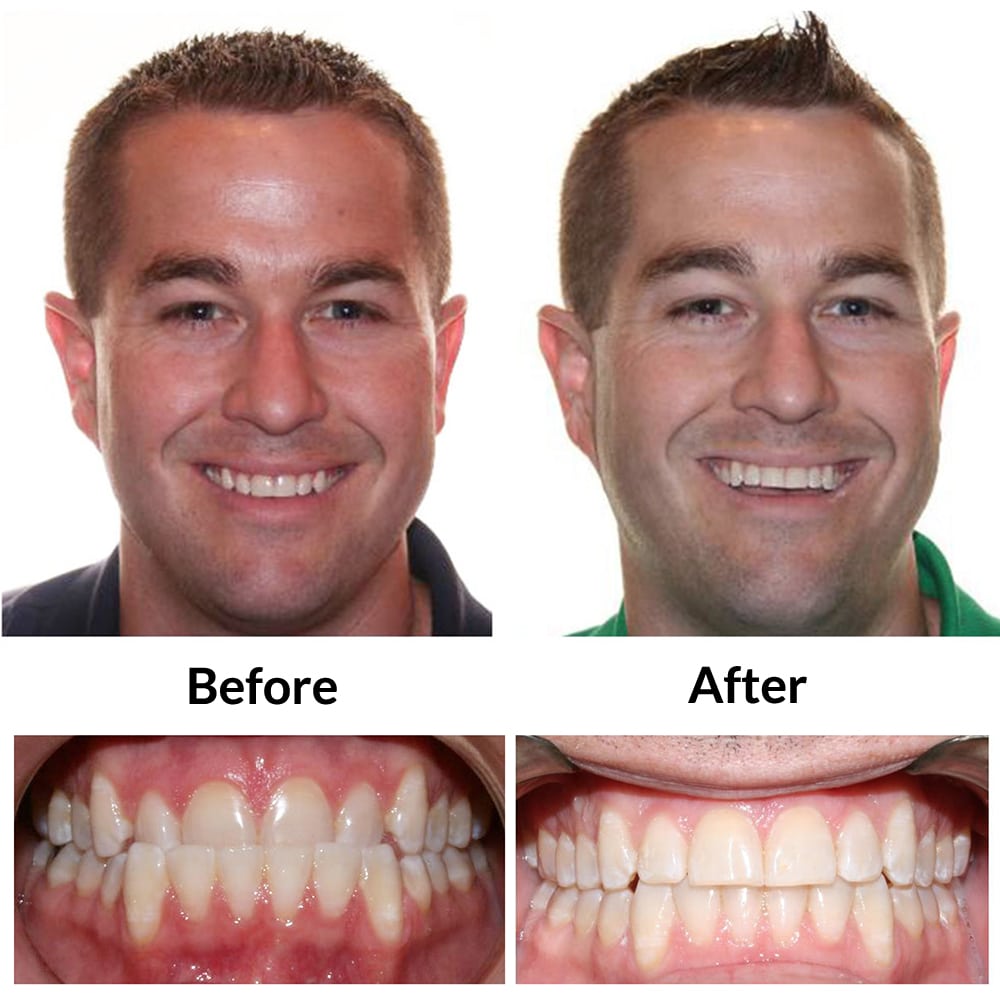Frequently Asked Questions Regarding Invisalign: Everything You Required to Know
Invisalign vs. Conventional Braces: Which Alternative Is Right for You?
When thinking about orthodontic treatment, the option between Invisalign and conventional braces provides a number of crucial variables that warrant mindful evaluation. Invisalign supplies a very discreet choice with detachable aligners, while traditional braces supply an extra noticeable yet reliable option for serious misalignment.
Review of Therapy Options

On the other hand, standard dental braces include steel braces and cables that are bonded to the teeth. This approach uses continual pressure with time to attain positioning. While reliable for complicated orthodontic concerns, standard braces call for normal check outs for modifications and can present challenges in preserving oral health because of the trouble of cleaning around braces and cords.
Both options have their values, and the choice often depends upon details dental conditions, lifestyle preferences, and individual conformity. Ultimately, seeking advice from an orthodontic specialist is essential for establishing one of the most suitable treatment strategy customized to individual needs. Understanding the subtleties of each choice can significantly influence the overall success of orthodontic therapy.
Visual Factors To Consider
A considerable aspect affecting the choice between Invisalign and typical braces is the aesthetic charm each therapy offers. Invisalign aligners are crafted from clear plastic, making them basically unnoticeable when used.
On the other hand, conventional dental braces are composed of steel braces and wires, which can be more visible. While developments in orthodontic technology have actually caused the development of smaller sized brackets and tinted elastics, standard braces still keep an even more conspicuous account. For some individuals, the presence of braces may deter them from looking for needed treatment.
Ultimately, the choice between Invisalign and traditional dental braces might rest on personal preferences concerning aesthetics. Clients who prioritize discernment typically lean towards Invisalign, while those who are less worried about visibility might select standard braces. Recognizing the aesthetic effects of each option is vital for making an informed choice that straightens with one's lifestyle and choices.
Comfort and Convenience

In regards to convenience, Invisalign aligners are removable, making it possible for individuals to enjoy their preferred foods without constraint and keep ideal dental hygiene. Brushing and flossing are simplified, as the aligners can be secured throughout these regimens, whereas conventional braces require cautious maneuvering around cables and braces.
In contrast, typical braces require regular changes, making them less practical for those with hectic timetables. Generally, the convenience and benefit of Invisalign make it an enticing option for several individuals looking for orthodontic treatment.
Treatment Duration and Efficiency
While both Invisalign and traditional braces are effective in correcting oral misalignments, the period of treatment can differ considerably in between the two alternatives. Typically, Invisalign therapy can take see this site anywhere from 12 to 18 months, depending on the intricacy of the instance. The clear aligners function by slowly shifting teeth right into their preferred settings, and normal follow-ups with an orthodontist help make certain progression continues to be on course.
In contrast, typical braces often need a longer commitment, typically varying from 18 months to three years. This results from their fixed nature and the use of brackets and cords, which can be a lot more reliable for serious misalignments and complex instances (Invisalign). The treatment performance of traditional dental braces is well-documented, as they enable for precise adjustments and higher control over tooth movement
Inevitably, the choice in between Invisalign and standard dental braces may pivot on both the awaited treatment period and the specific dental problems at hand. Consulting with an orthodontist is crucial, as they can provide customized recommendations based on individual requirements, guaranteeing the picked method straightens with preferred results and durations.
Price Contrast and Insurance Policy Choices
Cost plays a significant role in the decision-making process for individuals thinking about orthodontic treatment, whether choosing for Invisalign or conventional dental braces. Generally, the price of Invisalign ranges from $3,000 to $8,000, while conventional braces usually cost between $2,000 and $6,000. Aspects affecting these costs include the complexity of the situation, the duration of treatment, and geographical location.
Insurance protection can considerably impact out-of-pocket expenditures. Lots of dental insurance strategies provide partial protection for orthodontic treatments, however the specifics can vary commonly. It is crucial for people to evaluate their click to find out more insurance policy policies to establish recommended you read the extent of protection for either option. Normally, traditional braces might be more often covered by insurance plans compared to Invisalign, which some insurers classify as a cosmetic treatment.
Furthermore, several orthodontic methods supply flexible repayment plans, making both treatment options a lot more obtainable. Patients should ask about potential funding choices and price cuts for upfront repayments. Reviewing the overall cost, including insurance policy benefits and settlement plans, is vital for making a notified decision that straightens with both aesthetic choices and spending plan factors to consider.

Final Thought
In recap, the option between Invisalign and typical braces hinges on numerous factors, including visual choices, comfort, treatment duration, and expense. Invisalign uses a very discreet, removable alternative that facilitates oral hygiene and dietary flexibility, while typical braces may be extra ideal for complex dental problems and usually come at a reduced cost factor. Eventually, assessment with an orthodontist is important to evaluate specific conditions and figure out the most suitable treatment alternative for accomplishing optimum dental positioning.
When taking into consideration orthodontic treatment, the choice between Invisalign and conventional dental braces provides numerous vital aspects that merit mindful assessment.Contrasting Invisalign and typical dental braces reveals unique treatment alternatives for orthodontic improvement.While both Invisalign and traditional braces are effective in remedying dental imbalances, the period of treatment can vary substantially between the two choices.Cost plays a significant role in the decision-making procedure for individuals considering orthodontic therapy, whether choosing for Invisalign or typical braces.In recap, the selection between Invisalign and traditional braces hinges on several elements, consisting of visual preferences, comfort, therapy period, and cost.